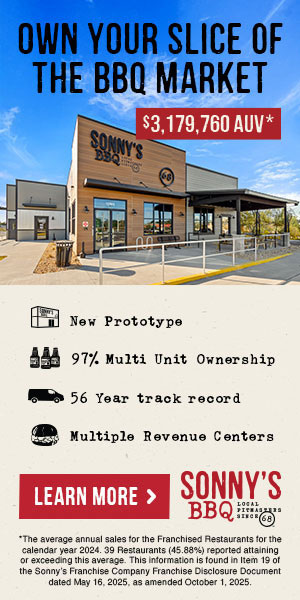Unite Your Children In Determining The Legacy Of Your Business

Our clients engage with us for help getting their businesses through the next generation of ownership successfully. One of the gut-wrenching questions they're often asking themselves is, "How in the world to I decide whether I should sell my business when I'm ready or pass it on to my children to continue my/our legacy?" When I ask what they want to do, I often hear, "My kids have been working in it with me for years, but I'm not sure if they really want to do it or if they're in it for other reasons. And if they really want it to continue, how do I appoint one of them the successor CEO over their siblings without destroying family dynamics. Especially if the choice I make is based on performance instead of whomever is the heir apparent?"
The founders of first-generation businesses have usually had to succeed as a one-person executive team at one point or another while building their business. They're intimately familiar with what it's like to simultaneously serve as chief operational executive, financial executive, human resource executive, and lead dishwasher. However, most importantly and consistently, they have been the visionary. In a role as a benevolent dictator, creator, and decision-maker, they have been the driving force for strategic operational and organizational growth. It is highly likely that as their business grew executive roles were filled by key managers and eventually their own children filled roles as they became more defined and responsibilities delegated. Except for the role of chief visionary. The role of chief strategic thinker is almost always fulfilled by the founding owner until they decide they've had enough, and the time has come to pass the reins. But what then, they think, voicing concern, "How do I decide who is capable of filling this void?"
Our answer is to delegate the challenge to the next generation. Meaning, why decide what your potential successors want on their behalf without soliciting their opinion in a well-structured formalized way. The answer as to which one of them should lead the organization in the future is likely all or both of them collectively. This answer provokes the question as to who makes the decisions as it can be unrealistic to lead by committee. Perhaps unsurprisingly, multiple successor candidates that have been working together intuitively know each other's strengths and weaknesses well enough to know what is best for the organization and the family as they grow together into the next generation of the family business. The trick, if there is one, is having them sit down and intentionally develop their thinking into a vision of unified growth and then formalizing it by writing it down, sharing it with each other, and refining it until it becomes one vision for each of them. So, the challenge is to develop, articulate and implement a unified vision for business growth between next-generation successor candidates to confirm alignment of desires and resources with long-term priorities of business succession while maintaining healthy family dynamics. The process would include but not necessarily be limited to:
- One-on-one development and confirmation of an ideal future as;
- Business partners
- Owners
- Leaders
- Family
- One-on-one development and confirmation of vision for united;
- Business Purpose
- Family (roles, responsibilities, governance)
- Leadership Team
- Culture
- Command and Control (who does what)
- Growth (resources: time, people, money)
Development and confirmation of combined ideal future and united vision in each of the areas above.
The benefits of this process would include the strengthening of family harmony between successor candidates, as well as providing everyone involved with a greater sense of security due to confidence that the goals can be achieved with the available resources and confidence and that the business can be sustained when the unexpected (business downturn, death, disability,) is encountered. It would also provide the foundation for broader strategic planning initiatives. Once the United Vision is agreed upon and formalized it can be presented to Gen1 leadership for consideration, refinement, and affirmation as to the agreed-upon path forward. A multi-generationally agreed-upon vision for unified growth will alleviate the anxiety of having to choose "who's best" between one's children and offer a much higher probability of organizational success through the next generation of leadership.
Dan Iosue is an Associate of The Rawls Group, a business succession planning firm. Dan specializes in dealing with the issues that must be resolved by business owners to implement succession strategies geared towards building business value. For additional information, visit www.rawlsgroup.com or call 407-578-4455
Share this Feature
Recommended Reading:
| ADVERTISE | SPONSORED CONTENT |
FRANCHISE TOPICS
- Multi-Unit Franchising
- Get Started in Franchising
- Franchise Growth
- Franchise Operations
- Open New Units
- Franchise Leadership
- Franchise Marketing
- Technology
- Franchise Law
- Franchise Awards
- Franchise Rankings
- Franchise Trends
- Franchise Development
- Featured Franchise Stories
| ADVERTISE | SPONSORED CONTENT |

$20,000
$500,000





 The multi-unit franchise opportunities listed above are not related to or endorsed by Multi-Unit Franchisee or Franchise Update Media Group. We are not engaged in, supporting, or endorsing any specific franchise, business opportunity, company or individual. No statement in this site is to be construed as a recommendation. We encourage prospective franchise buyers to perform extensive due diligence when considering a franchise opportunity.
The multi-unit franchise opportunities listed above are not related to or endorsed by Multi-Unit Franchisee or Franchise Update Media Group. We are not engaged in, supporting, or endorsing any specific franchise, business opportunity, company or individual. No statement in this site is to be construed as a recommendation. We encourage prospective franchise buyers to perform extensive due diligence when considering a franchise opportunity.